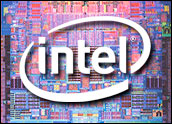
Intel will be eliminating a toxic heavy metal from its computer chip manufacturing process starting in the second half of this year.
It will begin using lead-free solder with next-generation 45nm Hi-k chips in the Intel Core 2 Duo, Core 2 Quad, and Xeon families, the company announced Wednesday.
Lead has been a concern in computer manufacturing, as it contributes to the toxic waste stream left behind when machines are discarded. Since many computers are replaced every few years, disposal has become a serious problem.
This is a “big deal,” Frank Gillett, vice president with Forrester Research, told TechNewsWorld. Especially in Europe, consumers are becoming more aware of the byproducts of computer manufacturing.
Previously, the environmental focus in the industry has been on making more energy-efficient devices, he noted. Now, attention is shifting toward the materials used in making computers and the pollutants that may leech into the ground or water supply through their disposal.
Smaller, Safer
Instead of lead-based solder, Intel will use a proprietary substance made of tin, silver and copper. The alloy will replace the combination of tin and lead currently used to attach chips to their outer containers.
Due to previous improvements in its manufacturing process, Intel currently uses just 5 percent of the amount of lead it used before 2002 to connect the silicon die of the chip to the substrate of the package that holds it. Now, that 5 percent will go as well.
It has taken a long time to cross this threshold, Gillett said. “Getting this last bit of lead out of chips has been a challenge.”
In addition to eliminating lead, Intel is seeking to use improved materials to make its chips more energy-efficient while continuing the meet the demand for higher-powered devices. The 45nm Hi-k chips also will employ strained silicon, which will allow Intel to house them in smaller devices, targeting the demand for mobile Internet access.
Company Focus
Intel has long touted its commitment to environmental issues. It has taken a leadership role in the semiconductor industry by reducing greenhouse gas emissions. Also, the company has a prominent water conservation program in place, and claims to have reduced water consumption by about 40 percent for each square centimeter of silicon it produces.
In addition to reducing hazardous materials used in the manufacturing process, Intel recycles more than 70 percent of its chemical and solid wastes, it says.
Among hazardous materials, lead is one of the most well-known. Lead poisoning in children became a public health concern after it was learned that paint in older buildings often contained high levels of lead.
Now, consumers are more aware of the myriad ways that toxic substances can make their way into water supplies, soil, the food chain and, ultimately, human bodies. Thus, consumer concern over toxic waste from computers is increasing and the public is becoming more aware of the necessity to dispose of them properly to avoid contaminating the environment, Gillett said.




















































